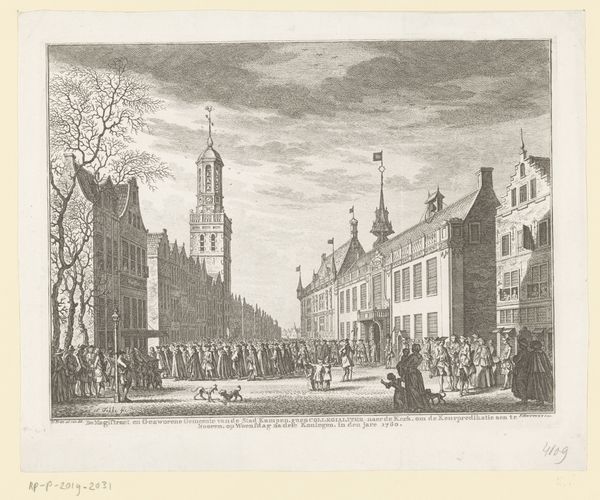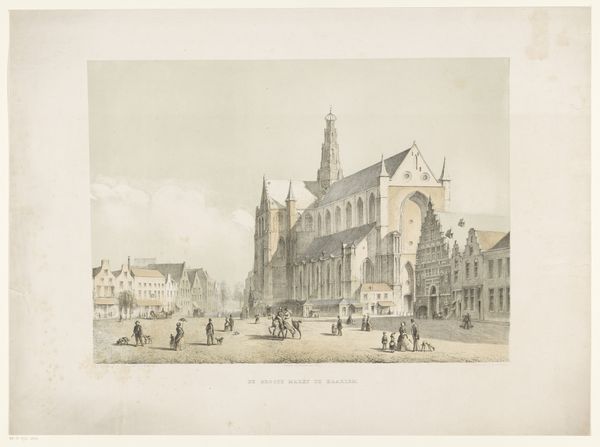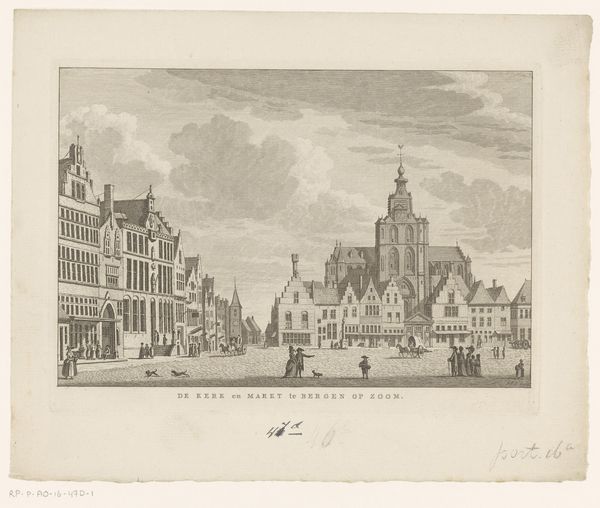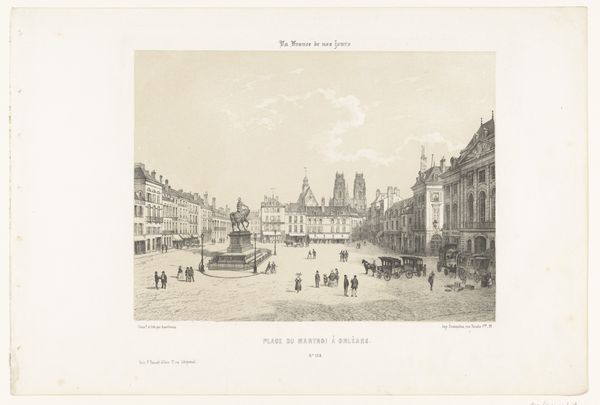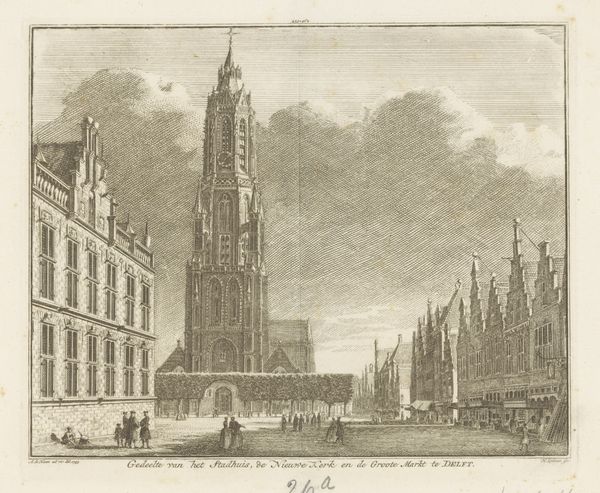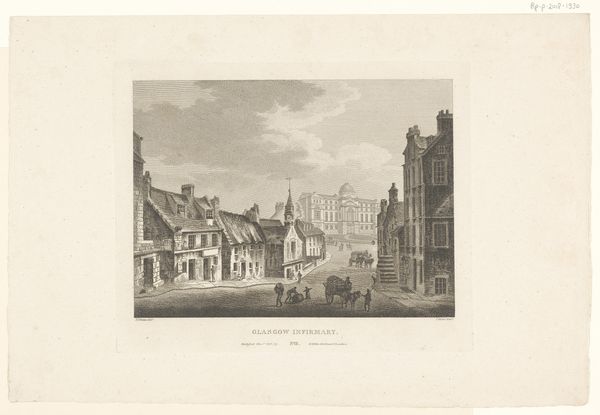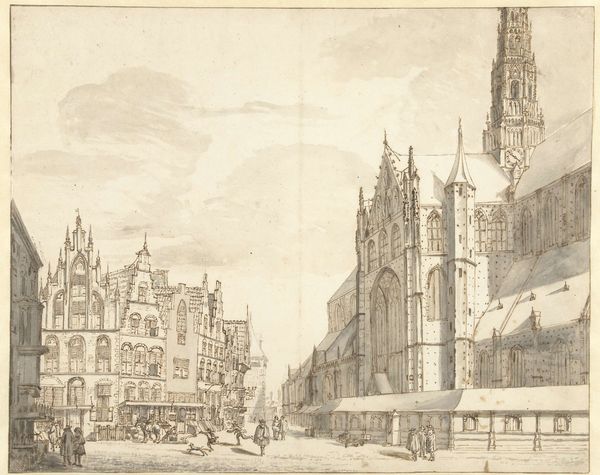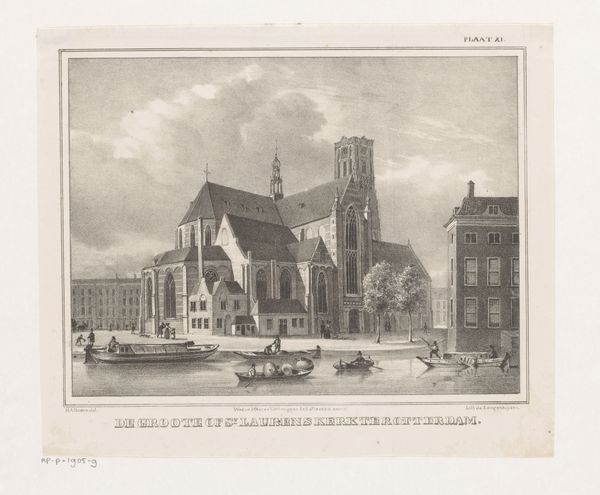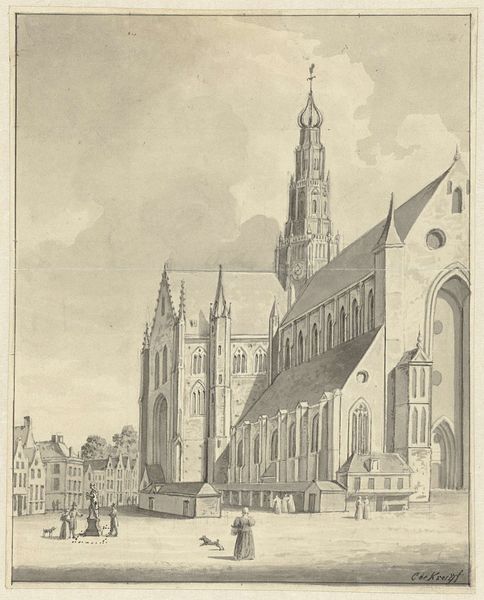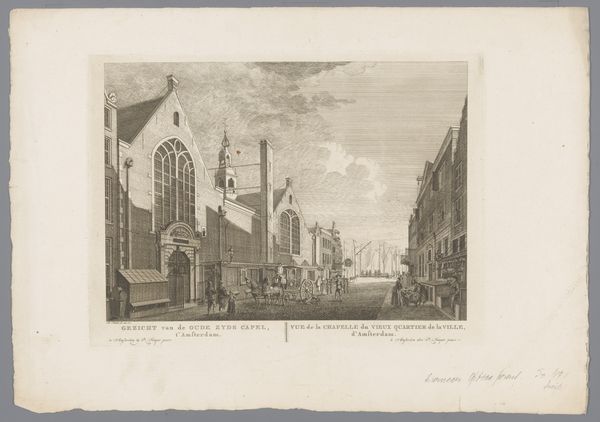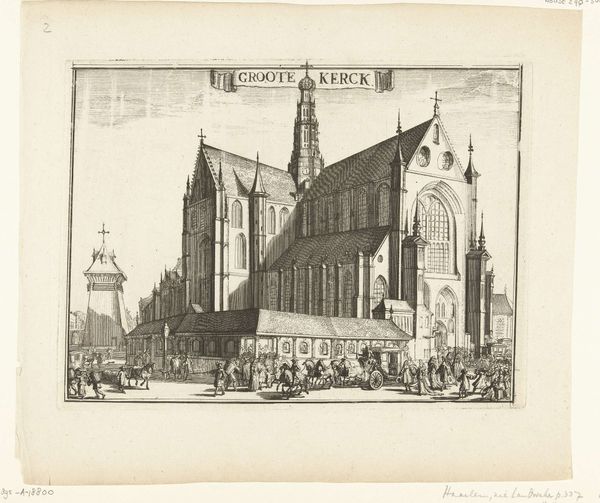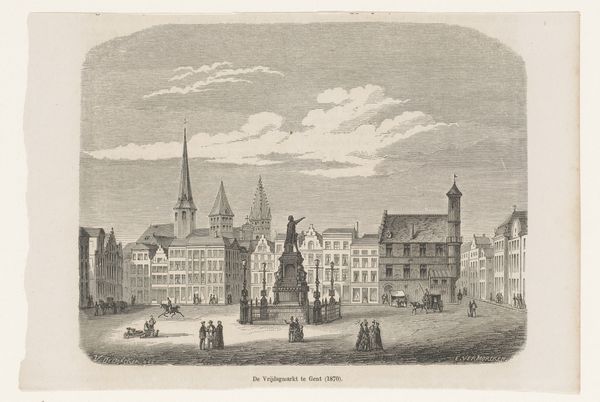
Dimensions: height 270 mm, width 364 mm
Copyright: Rijks Museum: Open Domain
Curator: We're looking at an engraving entitled "Gezicht op de Sint-Niklaas kerk te Gent," dating from between 1851 and 1870. It depicts St. Nicholas Church in Ghent. Editor: My first impression is one of stillness, almost solemnity. Despite the people and carriages populating the square, the scene has a muted, reverent atmosphere, amplified by the imposing church looming over the urban activity. Curator: Yes, the image exudes a certain Victorian gravitas. I'm drawn to considering how the urban landscape of Ghent may have been understood politically during this era. Were depictions of architectural power meant to reinforce existing social hierarchies, to subtly remind citizens of the Church’s continued role? Editor: Intriguing question. I see the steeple as a kind of cultural lodestone, directing communal thought. Notice how the engraver has painstakingly rendered its details? The pointed arches, the emphasis on verticality... it pulls the eye upward, almost physically enacting the aspiration toward the divine. Curator: And within that aspiration, where did marginalized communities find their place, or were they intentionally omitted from these constructed urban narratives? How were women, workers, and the poor situated, if at all, within this image? Or were they perhaps rendered as anecdotal props without a claim to spatial or symbolic representation? Editor: It's tempting to search for visual evidence within the details – the working-class attire, perhaps? But the limited resolution complicates such readings. Still, the fact that figures, however undifferentiated, populate the public space suggests the engraver aimed to show a relationship between church and society. The presence of horses might indicate some wealth dynamics playing out as well, no? Curator: Certainly. And in examining those details, we must also reflect upon the absences—what is not shown is as relevant as what is represented. It opens up questions about the prevailing artistic trends of the period, its socio-political implications, and about whose stories remained unheard. Editor: Well, by focusing on the symbolic weight of the central church, it is undeniable how such buildings and associated architecture have an impact on society, for those included and perhaps also excluded. Thank you, I have many thoughts that need more pondering. Curator: Indeed, an image holding historical and sociological implications, it can certainly promote great debate.
Comments
No comments
Be the first to comment and join the conversation on the ultimate creative platform.
